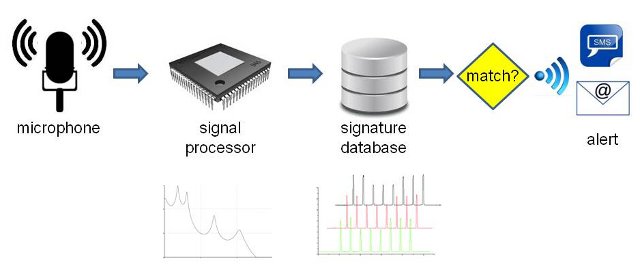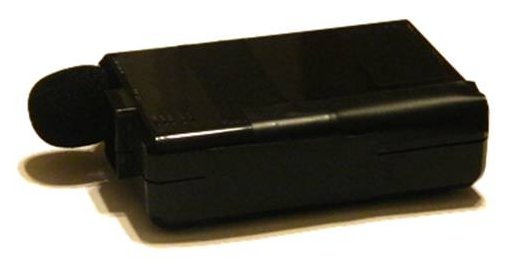In case you are wary of having drones, such as RC helicopters, quadrotors…, flying around your house and invading your privacy, DroneShield can help you detect consumers’ drones by using a Raspberry Pi, a microphone and FFTW library, a C library for computing the discrete Fourier transform.
The device will capture the audio with the microphone, analyze the noise spectrum of the drone flying around, and search for an entry in a signature database, and if a match is found the device will then send an email or SMS to inform you of the “invader”.

There are complex challenges to overcome, or limitations, with this method, as any background noise will affect the detection, and drone emitting little noise or flying at high altitude won’t be detected. Spectrum analyses should however help avoid false positives such as a loanmowers and leafblowers as those emit a different kind of noise.They also need to gather more signatures to store in their database for this device to be more useful, and plan to rely on the community, but I haven’t found links and/or instructions to do so yet.
Currently, they have a working prototype (DroneShield V0.0) on a laptop, and they’ll port the code to the Raspberry Pi (DroneShield V1.0). FFTW library supports x86 SSE/SSE2/Altivec SIMD instructions, as well as NEON instructions on ARM, which are not available on the ARMv6 processor (Broadcom BCM2835) used in the Raspberry Pi. I don’t know the processing power required to do real-time FFT, but there could potentially be performance issues on the Raspberry Pi.
They give hints, but do not commit, that they may release the source code for V0.0 and V1.0, as well as the hardware documentation for V1.0 after the indiegogo campaign.
You can get a DroneShield fully assembled by pledging $69 on Indiegogo, alternatively you can pledge $59 to get a box with all parts needed, and do the assembly yourself. Delivery is expected in August 2013. This is very much an “American thing”, and there does not seem to be an option to ship this internationally.
The next step, DroneShield V2.0, will be to build a specialized hardware, possibly based on ARM Cortex processor, and at a cost close to $20.

Jean-Luc started CNX Software in 2010 as a part-time endeavor, before quitting his job as a software engineering manager, and starting to write daily news, and reviews full time later in 2011.
Support CNX Software! Donate via cryptocurrencies, become a Patron on Patreon, or purchase goods on Amazon or Aliexpress






Seems like a big ask no matter what hardware. And without NEON … I suspect they’re just using the rpi as a marketing vehicle rather than a practical solution since it’s so hobbled in the computational performance stakes (unless they’ve access to the dsp thing). OTOH anything rpi related seems to garner undeserved amounts of positive press so good luck to ’em.
A FFT isn’t that expensive for a cpu with arithmetic hardware (the F is for fast for a reason), but creating a usable signature and looking it up in a big enough database to be useful might be. Phone chipsets are not known for their memory speed or i/o performance. But “real time” for such a device means a few seconds to about a minute, not microseconds, so there’s enough time to get quite a bit of processing done. And drones, well, drone – they’re not fleeting events that require constant data capture.
I experimented with ffts (NEON version) in the past with good results and I see the author’s recently added VFP support. He claims ffts is much faster than fftw although I didn’t test it myself. https://github.com/anthonix/ffts
BTW the idea is pretty nutty, I thought most drones flew too high, and you know, over ‘enemy combatants’. Still, it’s the right market to tap for that kind of toy.